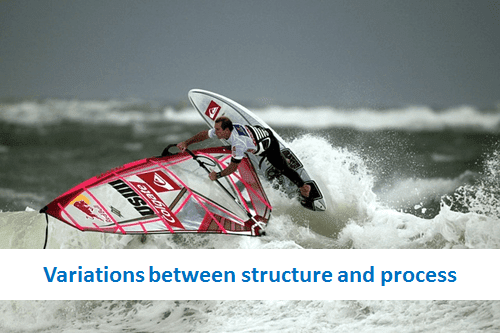
Processes are intrinsic more subject to change over time
However, if, for example, the balance between the costs of primary and secondary processes deteriorates, a message could signal this change to the manager. Since processes are intrinsic, more dynamic and more subject to changes over time (Tideman - Business Process Redesign, 1993) those elements of the organization are more likely to be appropriate for dynamic user interface controls like animation. This can make the BI system more attractive to the manager and might improve the overall usability.
Two ways to look
In general, there are two ways to look at things that take place in the organization: a more process and a more structural oriented view. Process oriented measures (e.g. processing time, input, stock and output) can be displayed in different ways to than structure oriented measures (e.g. number of subscriptions). This has also consequences for the design of the data model and ETL processes.
Different types of processes
The type of a process (primary, secondary) and the kind of a process (procure, input, operations, output, etc.) can be displayed with corresponding icons or symbols that enables recognition and increases the attractiveness. The kind of process does not vary between organizations because the value chain model is a generic model (Tideman, 1993) but it can facilitate the identification process when observing information.
Processes are conditional
Finally, processes and structures differ from each other in the way they interact. Processes of the same level interact with each other (often from left to right) and structural parts of the same level do not. Furthermore, processes are conditional. Their execution depends on the outcome of other processes. These processes are only performed if a condition will evaluate to true.
No comments:
Post a Comment